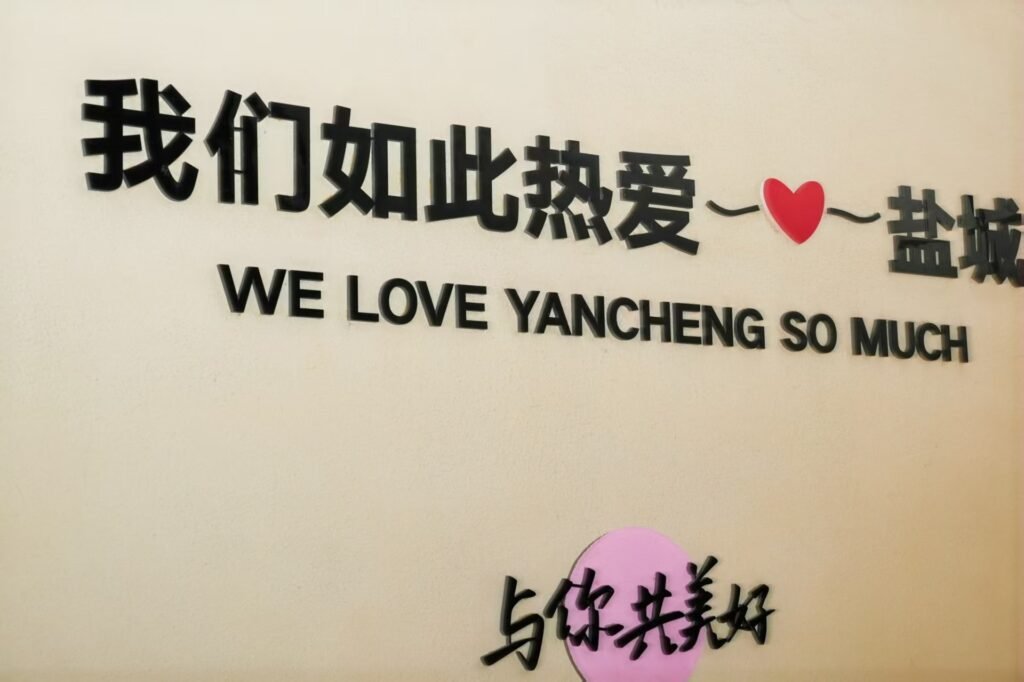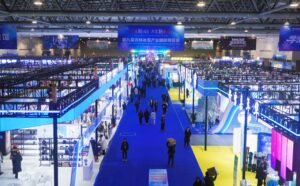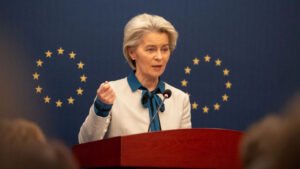Located on China’s eastern coast in Jiangsu Province, the city of Yancheng alone boasts the longest coastline in China with 582 km (almost as long as Antalya’s shoreline). In addition, with an area of 16,900 km² (roughly three times the size of Istanbul), it is the largest city in Jiangsu Province. Historically, the city was called the “Salt City” due to its role in salt production (“Yan” – 盐 – means salt, “Cheng” – 城 – means city).
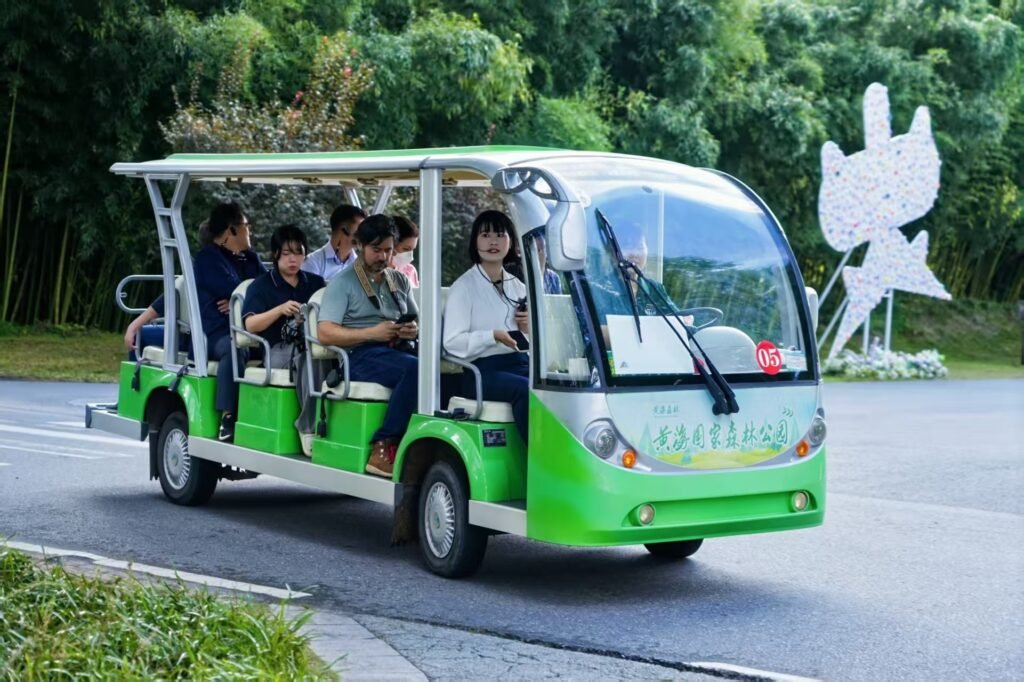
Today, however, it is known for its natural beauty, breakthroughs in renewable energy, and major tourism centers. Alongside the growth of its automotive, machinery import-export, textile, and chemical industries, the so-called wind farms also play a key role in the city’s economy.
Yellow Sea Forest Ecotourism Resort
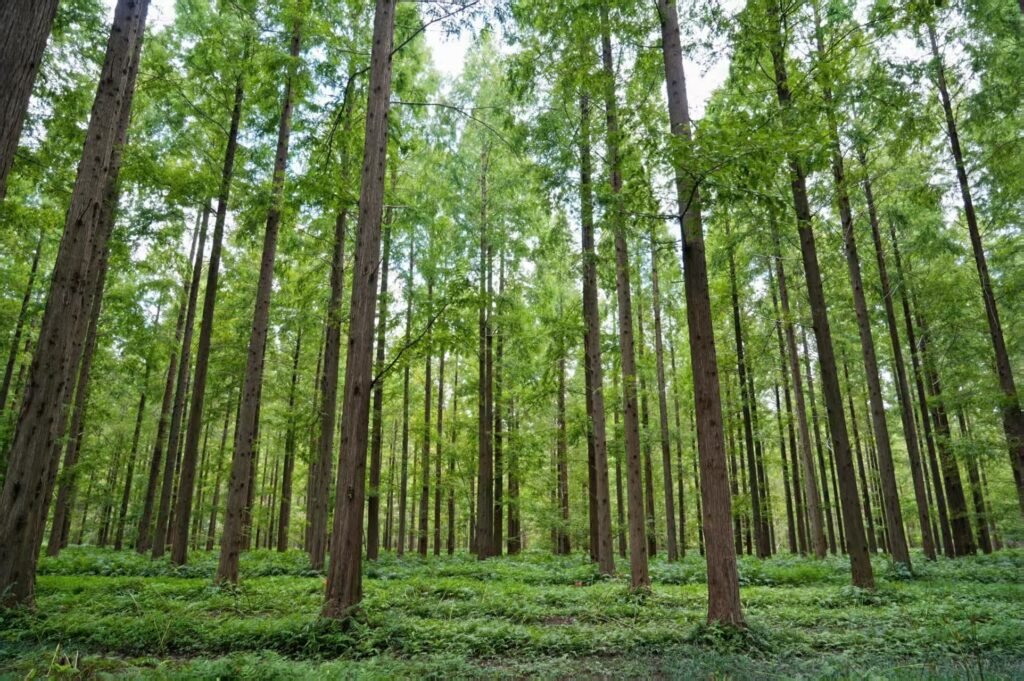
Yancheng’s Dongtai (东太) county is home to a massive man-made forest and ecological holiday resort. The Yellow Sea Forest Ecotourism Resort (黄海森林生态旅游度假区), the largest scenic forest on China’s eastern coast, derives its name from the yellowish-brown hue of the sea separating it from the Korean Peninsula.
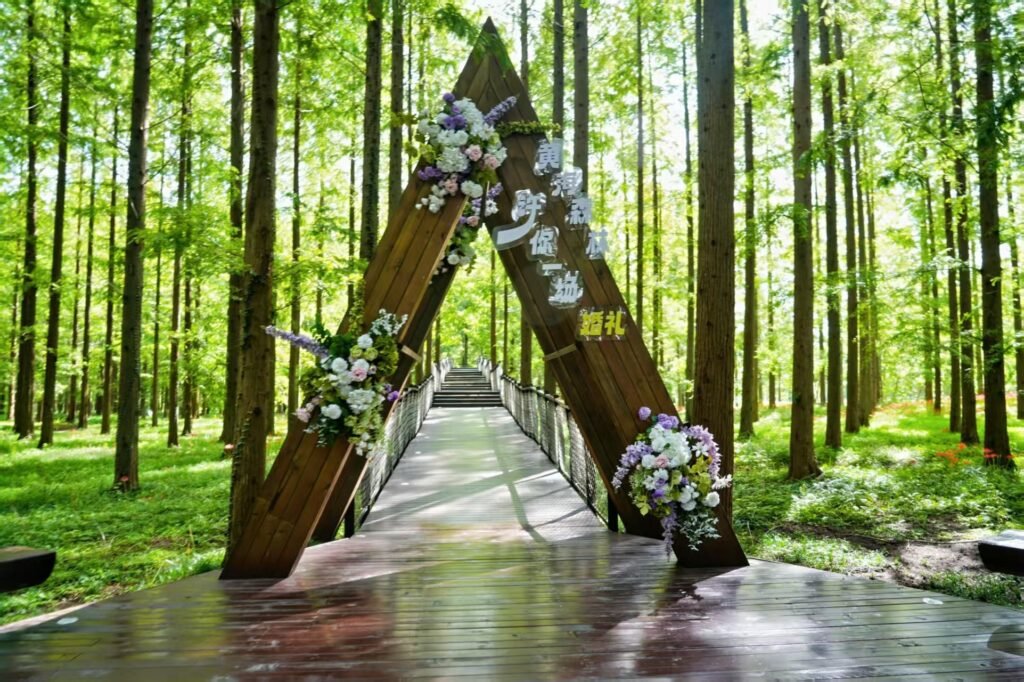
Initially established in the 1960s as a State Forest Farm (国营林场), the resort stands out as a successful example of China’s afforestation strategies under various policies. Yancheng’s coasts facing the Yellow Sea were at risk of erosion due to strong ocean winds and the resulting sandstorms. To counter this, an afforestation project was launched to form a natural barrier, which later expanded and transformed this once barren land into a lush green forest.
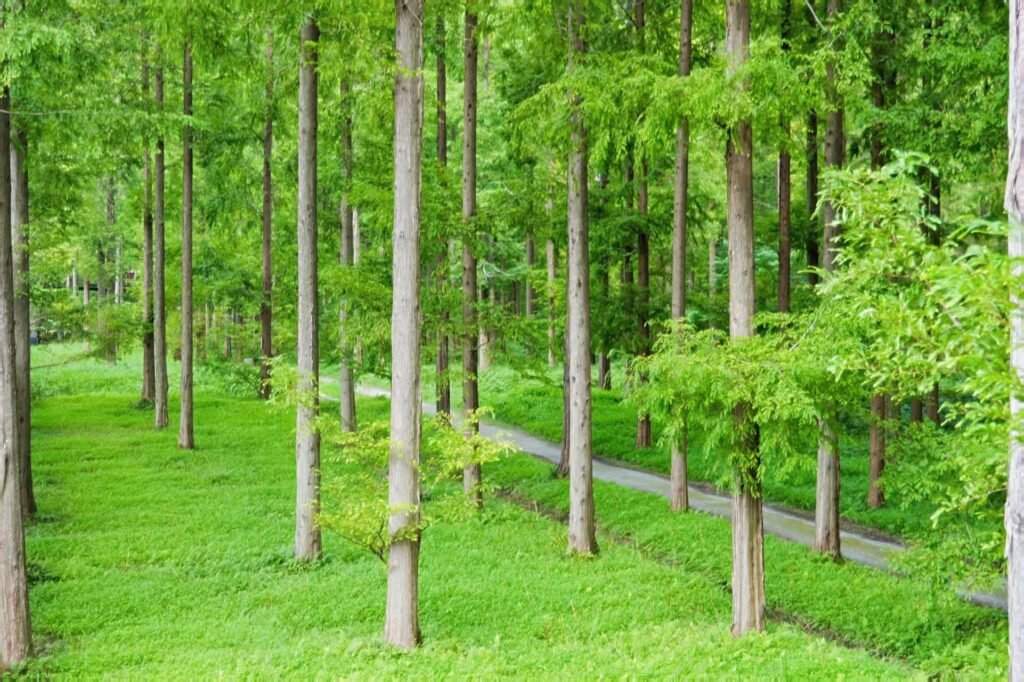
Located about an hour’s drive from downtown Yancheng, the Yellow Sea Forest Ecotourism Resort covers an area of 42 million m². Once inside, visitors immediately notice the convenience for circulation and recreation. Besides kilometers of cycling paths extending deep into the forest, fully electric ten-passenger vehicles are available for visitors. One of the most striking observations is how the area serves as a gathering place for families, both young and old, throughout the day. In one part of the forest, families stroll and cycle with their children, while in another, the elderly dance or sit together chatting. The abundance of food and beverage stands, diligent security staff, and well-equipped facilities such as restrooms greatly enhance the visitor experience.
Dongtai Tiaozini Wetland

Leaving behind the vast green forest stretching toward the sky and passing by seaside salt-processing plants, we arrive at the Dongtai Tiaozini Wetland (东台条子泥湿地). The first thing that stands out here are the rows of telescopes along the wetlands. While at first they might appear decorative or unused, they actually offer impressive functionality. With performance exceeding expectations, numerous bird species migrating to the wetland appear almost within arm’s reach. Later, the guide explains that this region is recognized not only in China but worldwide as an ecological hotspot.
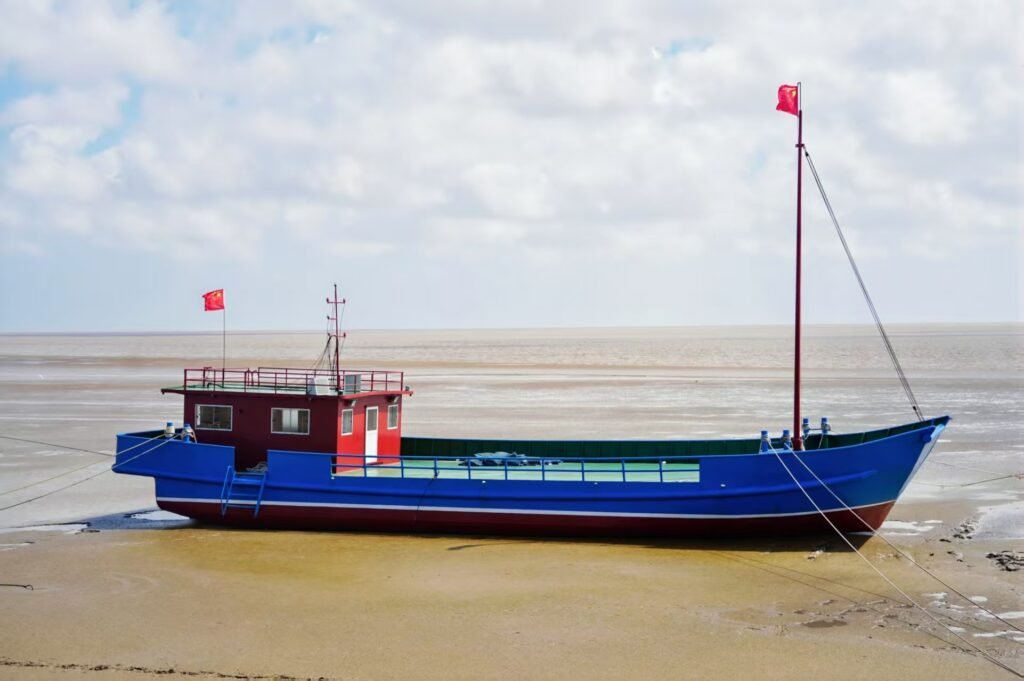
Situated along the East Asia–Australasia Flyway, Dongtai Tiaozini Wetland is a critical stopover site hosting millions of birds each year. As in many parts of China, this facility is operated with great state-level seriousness, and its ecological balance—whether maintained or newly created—is monitored in a completely safe, environmentally friendly, and technologically advanced manner. Like the Yellow Sea Forest Ecological Resort, this wetland is freely accessible to visitors. The professionalism and hospitality of the staff attract more tourists each year. Many families come here to observe birds free of charge and to instill a love of animals in their children.
The name “Tiaozini” (条子泥) literally means “striped mud” in Chinese, as the wetland is established on a vast mudflat. The abundance of fish and insect species in the mud is one of the key reasons birds migrate here. During low tide, birds find it easier to forage in the mud, while at high tide the shallow waters become attractive feeding grounds for herons. Covering about 50,000 hectares under protection, the wetland hosts remarkable biodiversity. Endangered species such as the Red-Crowned Crane, Spoon-billed Sandpiper, and Black-faced Spoonbill find safe breeding grounds here. In 2019, Dongtai Tiaozini Wetland was inscribed on UNESCO’s World Heritage List.
Dafeng Milu National Nature Reserve
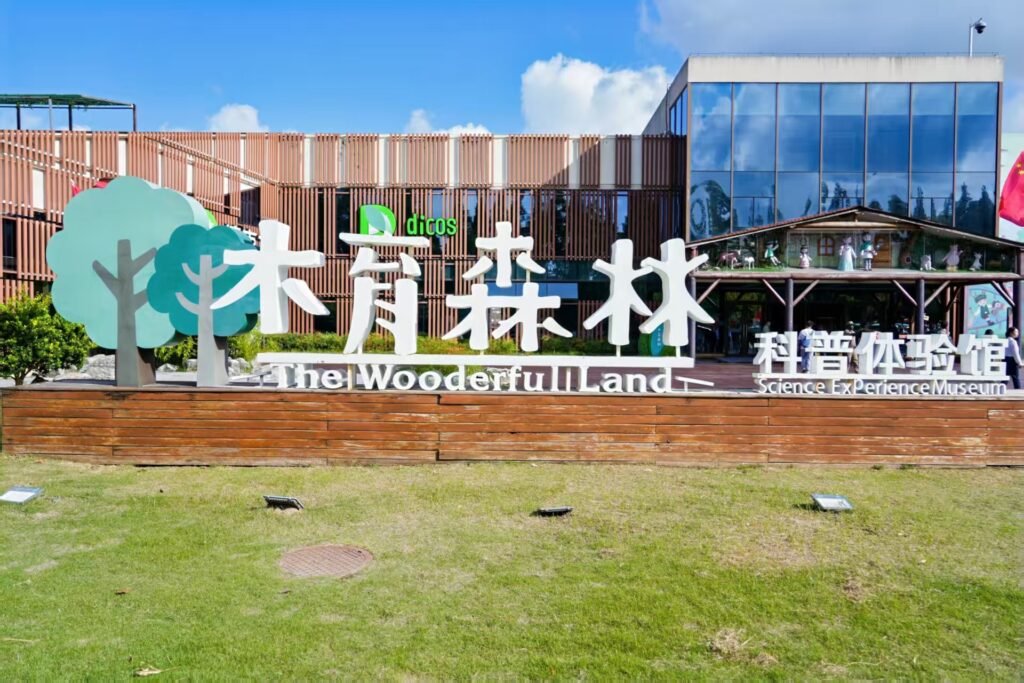
A unique species of deer known as “Père David’s Deer” or Milu is protected under the Dafeng Milu National Nature Reserve in Yancheng. What makes this park special is that it is exclusively dedicated to conserving the Milu deer—no other animal species are protected here. This choice is rooted in the history of the species: once part of China’s natural heritage, the Milu went extinct in mainland China in the early 20th century due to overhunting. A few specimens had been transported to England earlier, where they were preserved. In the 1980s, through international cooperation, they were reintroduced to their homeland. Yancheng’s Dafeng district was chosen as their conservation base. Starting with just 39 deer, the project today shelters the largest Milu population in China.
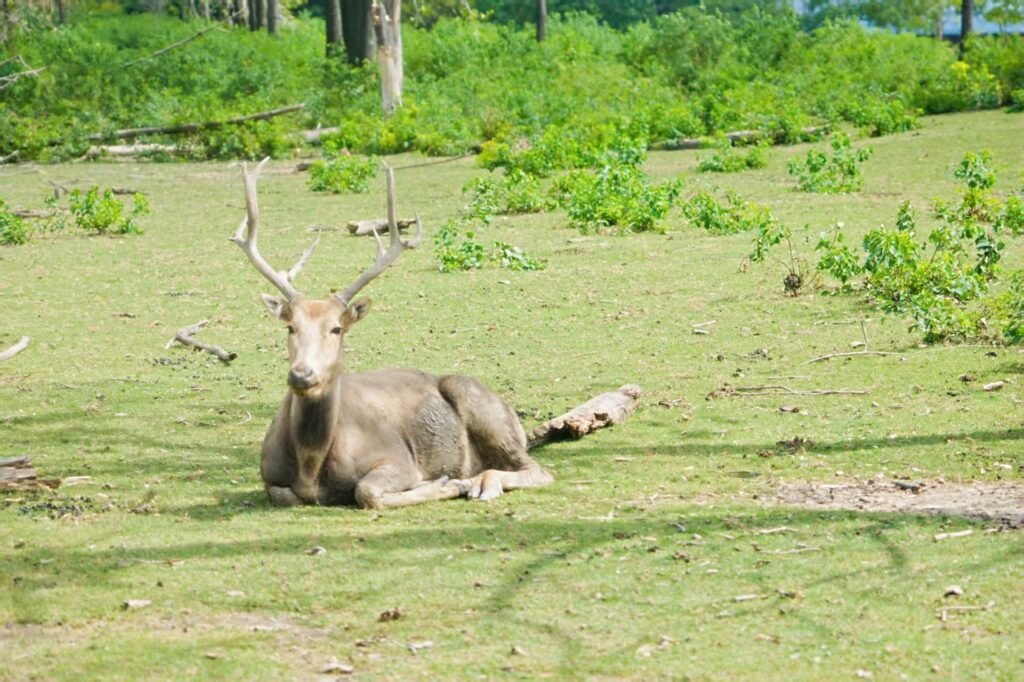
Like the wetlands in Dongtai, this area consists of mudflats and marshlands, which were once the natural habitat of the Milu. The reserve covers about 2,600 hectares. Rather than isolating the deer from the public, the reserve allows visitors to interact with them. An entrance ticket costs 45 yuan and grants full access to the facility. Electric ten-passenger vehicles transport visitors across the park, providing close-up encounters with the deer. Tour guides even bring bowls of carrots to encourage visitors to feed the deer, fostering interaction. This approach reduces the appeal of hunting and helps instill a love for animals, especially in children. Visitors can also freely walk or cycle among the deer with their families without any protective barriers.
Dafeng Port Zero-Carbon Industrial Park
In addition to its unique deer breeding reserve, the city of Dafeng also hosts the Dafeng Port Zero-Carbon Industrial Park (大丰港零碳产业园), a facility dedicated to achieving “zero carbon” goals. Built around Dafeng Port, the site may appear at first glance to be a regular industrial zone, but closer inspection reveals its distinctive features. Every element of the park is meticulously designed to be nearly 100% electric and environmentally friendly. It represents a significant and tangible step toward China’s “Dual Carbon” goals.
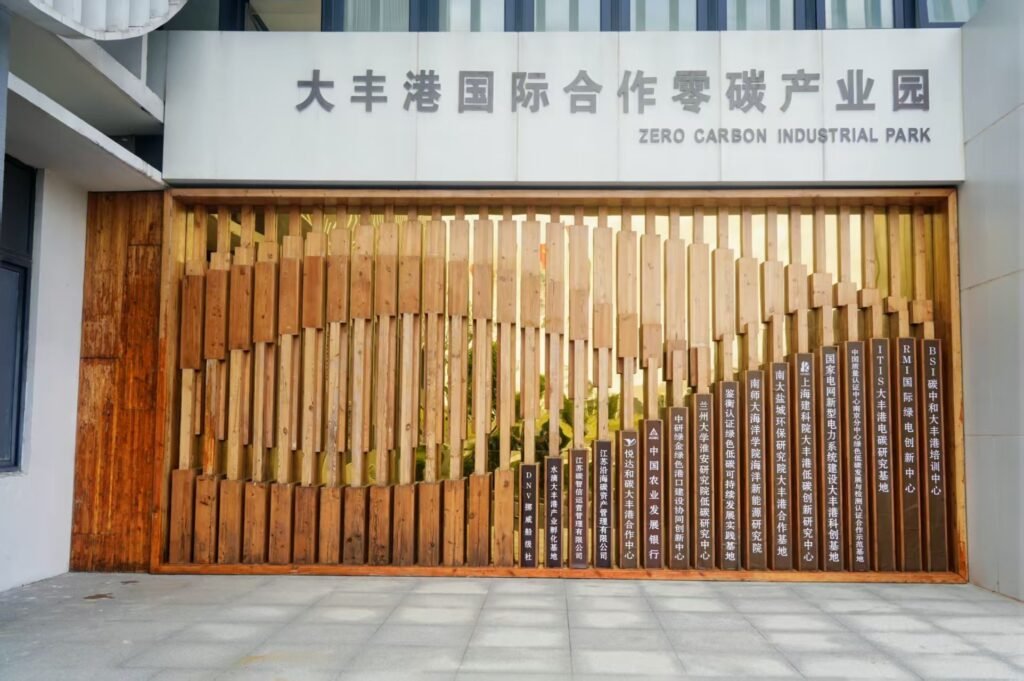
The most striking aspect is that not only production facilities and support vehicles but even benches, bus stops, and electric poles have been designed with this vision. Unlike the usual reliance on solar panels atop electric poles, the innovations here go much further. Benches in the park are designed to generate electricity, allowing people to charge their phones for free while seated. In addition to promoting cycling within the park, semi-electric bicycles powered by the same system are also available. Alongside such creativity in electricity generation, hydrogen produced via water electrolysis is stored on-site, and wind turbines are extensively used.
Yancheng Landmark: Chuanchang Eye

The final stop of our trip is Yancheng’s turning point: the Chuanchang Eye (盐城地标串场眼). Literally meaning “River Connecting the Salt Farms,” Chuanchang Eye today shines as a hub of social life in the city. A large artificial pool is fronted by a lighthouse, with shopping centers and stores stretching out on either side. During summer, a stand is set up along the shore to make it easier to watch and participate in water sports. From the lighthouse, an English-style bridge leads to the opposite side of the district. Unlike the central lake setting, this side gives the impression of two long riverside promenades, resembling Venice or the Turkish city of Eskişehir. Young girls dancing on street corners and the elderly engaging in group dances—a common pastime in China—create a vibrant atmosphere that captivates visitors.
Abroad Africa AI Beijing Belt & Road BLCU BRICS China chinese CPC CSC Culture Economy education EU Guizhou Kültür Langauge movie Multipolarity Russia scholarship science Shanghai Sino Sino Turkish Sino Turkish Sino Turkish Sino Turkish Sino Turkish Studies Sino Turkish Studies Sino Turkish Studies Sino Turkish Studies space Syria Taiwan Tariff trump Turkiye Türkiye University USA Xinjiang ZJUT Çin

